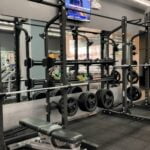When it comes to achieving and maintaining a healthy lifestyle, fitness exercises play a crucial role. These exercises encompass a wide range of physical activities that aim to improve overall health and well-being.
From cardio to strength training to flexibility exercises, incorporating regular fitness routines into your daily life can offer numerous benefits. In this article, we will explore the definition of fitness exercises, their various types, the importance of proper form and technique, common mistakes to avoid, and how to create a balanced fitness routine.
Regular exercise offers countless benefits for both the body and mind. From improving cardiovascular health to boosting mood and reducing stress, it’s no secret that staying physically active is essential for overall well-being. Fitness exercises also help in maintaining a healthy weight, increasing muscle strength, enhancing flexibility and endurance, and reducing the risk of chronic diseases such as diabetes and heart disease.
There are different types of fitness exercises that individuals can engage in to achieve their health and fitness goals. These include cardio exercises like running or cycling; strength training exercises such as weightlifting or bodyweight workouts; and flexibility exercises like yoga or stretching routines. Understanding these various types of exercises is vital in creating a well-rounded fitness routine that meets individual needs and goals.
The Benefits of Regular Exercise
Regular exercise has numerous benefits for both physical and mental health. Engaging in fitness exercises can help individuals maintain a healthy weight, reduce the risk of chronic diseases such as heart disease and diabetes, and improve overall cardiovascular health. Additionally, frequent physical activity can have a positive impact on mental well-being by reducing stress, anxiety, and depression.
Furthermore, incorporating regular exercise into one’s routine can lead to increased muscle strength and endurance, improved flexibility and balance, and enhanced bone density. These physical benefits not only contribute to better overall health but also improve daily functioning and quality of life.
In addition to the physical benefits, regular exercise is also linked to cognitive function. Research has shown that engaging in fitness exercises can improve memory, focus, and overall brain function. This highlights the importance of maintaining an active lifestyle not just for physical well-being but also for mental acuity.
Overall, the multitude of benefits derived from regular exercise underscores the importance of prioritizing physical activity in one’s daily routine. Whether it is through cardio workouts, strength training, or flexibility exercises, incorporating fitness exercises into one’s lifestyle can lead to a healthier, happier life.
Types of Fitness Exercises
When it comes to fitness exercises, there are various types that individuals can incorporate into their routine to achieve a well-rounded approach to physical activity. These types include cardio exercises, strength training, and flexibility exercises.
Cardio exercises, also known as aerobic exercise, are activities that increase the heart rate and improve cardiovascular health. This type of exercise includes activities such as running, swimming, cycling, and dancing. Engaging in regular cardio exercise not only improves heart health but also helps with weight management and overall endurance.
Strength training is another important aspect of fitness exercises. This type of exercise involves using resistance to build strength and muscle mass. Examples of strength training exercises include weightlifting, bodyweight exercises like push-ups and squats, as well as using resistance bands or machines at the gym. Incorporating strength training into a fitness routine can help improve bone density and metabolism while also reducing the risk of injury.
Flexibility exercises are often overlooked but are crucial for maintaining good overall physical health. These exercises focus on improving range of motion in the joints and increasing flexibility in the muscles. Activities such as yoga, Pilates, and regular stretching routines fall under this category. Flexibility exercises can help reduce muscle tension, improve posture, and prevent injuries related to tight muscles.
Including all three types of fitness exercises – cardio, strength training, and flexibility – into a well-balanced fitness routine can lead to improved overall health and wellbeing.
| Type of Exercise | Examples |
|---|---|
| Cardio | Running, Swimming, Cycling |
| Strength Training | Weightlifting, Push-ups, Squats |
| Flexibility | Yoga,Pilates Stretching Routines |
How to Get Started With Fitness Exercises
Getting started with fitness exercises can be an exciting and rewarding journey towards a healthier lifestyle. Whether you are a beginner or looking to get back into a regular exercise routine, there are some essential steps to consider before diving in. Here are some tips on how to get started with fitness exercises:
1. Set Clear Goals: Before jumping into any fitness routine, it’s crucial to establish clear and achievable goals. Determine what you want to accomplish through your fitness exercises, whether it’s weight loss, muscle gain, improved cardiovascular health, or simply feeling better overall.
2. Choose the Right Activities: There are various types of fitness exercises, including cardio, strength training, and flexibility exercises like yoga or Pilates. Consider what interests you the most and what aligns with your goals. For example, if you enjoy high-energy workouts, you might lean towards cardio activities like running or dancing. If you’re looking to build strength, incorporating resistance training could be beneficial.
3. Start Slow and Gradually Increase Intensity: It’s essential to ease into a new fitness routine to avoid injury and burnout. Begin with low-impact activities and gradually increase the intensity as your body becomes accustomed to the physical demands. This might involve starting with short walks before progressing to longer hikes or beginning with lightweight lifting before advancing to heavier weights.
Remember that consistency is key when starting a fitness exercise routine – take it one day at a time and celebrate small victories along the way.
Embarking on a new fitness journey can be both challenging and rewarding. By setting clear goals, choosing suitable activities that align with your interests, and gradually increasing intensity while maintaining consistency, you can lay a solid foundation for achieving long-term success in your fitness endeavors. What Is Fitness Exercises? It’s about taking proactive steps toward improving your overall well-being through physical activity.
Common Mistakes to Avoid in Fitness Exercises
When engaging in fitness exercises, it’s important to be aware of common mistakes that can hinder your progress and even lead to injury. Avoiding these mistakes will not only help you achieve better results, but also ensure a safe and effective workout. Here are some common pitfalls to watch out for:
1. Overtraining: One of the most common mistakes people make when starting a fitness routine is overexerting themselves. Overtraining can lead to fatigue, burnout, and even injury. It’s important to start slowly and gradually increase the intensity and duration of your workouts.
2. Poor Form: Many people focus on the quantity of their exercises rather than the quality. This often leads to poor form, which can result in muscle imbalances and injury. Proper form is crucial for maximizing the effectiveness of your workouts and preventing injury.
3. Ignoring Rest and Recovery: Rest is an essential component of any fitness routine, as it allows your muscles time to repair and grow stronger. Failing to give your body adequate rest can lead to overuse injuries and burnout.
It’s important to be mindful of these common mistakes and take steps to avoid them in order to get the most out of your fitness exercises while also staying safe.
By being aware of these potential pitfalls, you can ensure that you’re getting the most out of your fitness routine while minimizing the risk of injury or burnout. Remember that proper form, rest, and gradual progression are key elements in achieving success with your fitness exercises.
The Importance of Proper Form and Technique
When it comes to fitness exercises, one of the most important aspects to consider is proper form and technique. Whether you’re engaging in cardio, strength training, or flexibility exercises, doing them correctly can make a significant difference in achieving your fitness goals and preventing injuries.
Preventing Injuries
Proper form and technique are crucial in preventing injuries during fitness exercises. When you perform exercises with incorrect form, you put unnecessary stress on your muscles and joints, increasing the risk of strains, sprains, and other injuries. By maintaining proper form, you can ensure that your body is working efficiently and effectively, reducing the likelihood of getting hurt.
Maximizing Results
In addition to preventing injuries, using proper form and technique can help maximize the results of your fitness exercises. Whether you’re aiming to improve cardiovascular health, build muscle strength, or increase flexibility, doing exercises with correct form ensures that you are targeting the right muscles and getting the most out of each movement.
Improving Body Awareness
Focusing on proper form and technique also helps improve body awareness, allowing you to develop a better understanding of how your body moves and functions. This increased awareness can lead to better coordination, balance, and overall physical control. It also sets a foundation for progress as you advance in your fitness journey.
Creating a Balanced Fitness Routine
The Importance of Variety
When it comes to creating a balanced fitness routine, one of the most important factors to consider is variety. Engaging in different types of fitness exercises not only prevents boredom, but it also provides a well-rounded approach to physical health. Incorporating a mix of cardio, strength training, and flexibility exercises ensures that all aspects of fitness are addressed. This variety can also help prevent overuse injuries that may occur from repetitive movements in just one type of exercise.
Scheduling Your Workouts
In order to create a balanced fitness routine, it’s important to schedule workouts that target different areas of fitness throughout the week. This might involve dedicating specific days to cardio workouts, strength training, and flexibility exercises. It’s also important to allow for rest days in between more intense workouts to give the body time to recover and rebuild muscle.
Setting Realistic Goals
Creating a balanced fitness routine also involves setting realistic goals that align with your individual fitness level and lifestyle. Whether you’re aiming to increase endurance, build muscle, or improve flexibility, setting achievable goals will help keep you motivated and on track with your fitness routine. Remember that progress takes time and consistency, so it’s important not to get discouraged if you don’t see immediate results. Keep track of your progress and celebrate small achievements along the way.
Resources and Tools for Fitness Exercises
When it comes to fitness exercises, having the right resources and tools can make a huge difference in your workout routine. Whether you prefer working out at home or going to the gym, there are a variety of options available to help you achieve your fitness goals.
One essential resource for fitness exercises is access to knowledgeable trainers or instructors. Many gyms offer personal training sessions with certified professionals who can provide tailored workout plans and guidance on proper form and technique. In addition, group exercise classes led by experienced instructors can be a great way to stay motivated and learn new exercises.
Another important tool for fitness exercises is having the right equipment. This could include items such as dumbbells, resistance bands, yoga mats, stability balls, and cardio machines like treadmills or stationary bikes. These tools can help you diversify your workouts and target different muscle groups, leading to better overall results.
For those who prefer working out at home, there are also plenty of online resources available. From instructional videos and fitness apps to virtual fitness classes, there are countless options for accessing guided workouts from the comfort of your own space. These resources can be especially helpful for beginners looking to learn how to perform different exercises correctly.
In summary, having access to knowledgeable trainers or instructors and the right equipment can greatly enhance your fitness exercises. Whether you choose to work out at a gym or at home, these resources and tools can provide the support and guidance needed to create an effective and enjoyable workout routine.
| Resources | Tools |
|---|---|
| Knowledgeable trainers or instructors | Dumbbells, resistance bands, yoga mats |
| Group exercise classes | Stability balls, cardio machines |
| Online instructional videos | Fitness apps |
Conclusion
In conclusion, embracing a healthy lifestyle through fitness exercises is essential for overall well-being. Regular exercise not only improves physical health but also has a positive impact on mental and emotional wellness. By incorporating various types of fitness exercises such as cardio, strength training, and flexibility routines into your daily routine, you can experience the numerous benefits that come with an active and healthy lifestyle.
It is important to remember that getting started with fitness exercises does not have to be overwhelming. Starting small and gradually increasing the intensity and duration of your workouts is key to building a sustainable fitness routine. Additionally, focusing on proper form and technique while performing exercises will help prevent injuries and maximize the effectiveness of your workout.
Creating a balanced fitness routine that includes a variety of exercises and allows for rest and recovery is crucial for long-term success. Remember to listen to your body, stay consistent, and seek out resources and tools that can support your fitness journey. By prioritizing regular exercise and making it a part of your daily life, you can enjoy improved health, increased energy levels, and an overall sense of well-being.
Frequently Asked Questions
What Is the Meaning of Fitness Exercise?
Fitness exercise refers to physical activity performed with the specific goal of improving one’s overall health, strength, flexibility, and endurance. This can include activities like cardio, weightlifting, yoga, or any form of exercise that challenges the body.
What Is the Importance of Fitness Exercise?
Fitness exercise is important for maintaining a healthy lifestyle. Regular physical activity can reduce the risk of chronic diseases, improve mental health, boost energy levels, and contribute to better quality of life. It also helps in managing weight and promoting better sleep.
What Is Fitness and Examples?
Fitness encompasses a person’s ability to perform physical tasks and exercises effectively. Examples of fitness activities include running, swimming, cycling, strength training, yoga, and any other form of physical movement that promotes overall health and well-being.

Passionate about providing useful information to anyone with an interest in the field of Personal Training, I strive to pass on to our readers quality information and to answer any questions about Personal Trainers, the work they do and how to become one.





